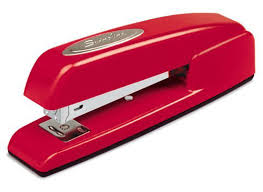1- Complete the definition.
Mechanics_ A rigid bar that about one point and that
used to move an object at a second point by a forcé at a third.
APPLIED- PIVOTS- IS
A lever is a simple machine that allows you to gain a mechanical advantage in moving an object or in applying a force to an object. It is considered a "pure" simple machine because friction is not a factor to overcome, as in other simple machines.
A lever consists of a fulcrum, applied force and load. There are three common types or classes of levers, depending on where the fulcrum and applied force is located. The mechanical advantage is that you can move a heavy object using less force than the weight of the object, you can propel an object faster by applying a force at a slower speed, or you can move an object further than the distance you apply to the lever.
Parts of a lever
A typical lever consists of a solid board or rod that can pivot about a point or fulcrum. A force or effort is applied, resulting in moving or applying force to a load. The distance from the applied force or effort force to the fulcrum is called the effort arm and the distance from the load to the fulcrum is called the load arm.

Parts of a Lever
Since there is typically a very small amount of friction at the fulcrum, overcoming friction is not a factor in a lever as it might be in another simple machine like a ramp or wedge. Thus, we consider a lever a pure simple machine.
Lever configurations
There are three types or classes of levers, according to where the load and effort are located with respect to the fulcrum.
Class 1
A class 1 lever has the fulcrum placed between the effort and load. The movement of the load is in the opposite direction of the movement of the effort. This is the most typical lever configuration.

Class 1 lever
Class 2
A class 2 lever has the load between the effort and the fulcrum. In this type of lever, the movement of the load is in the same direction as that of the effort. Note that the length of the effort arm goes all the way to the fulcrum and is always greater than the length of the load arm in a class 2 lever.

Class 2 lever
Class 3
A class 3 lever has the effort between the load and the fulcrum. Both the effort and load are in the same direction. Note that the length of the load arm goes all the way to the fulcrum and is always greater than the length of the effort arm in a class 3 lever.

Class 3 lever
Choose








Questions you may have include:
